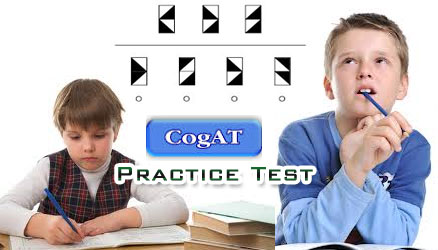Some schools add to its growing line of Cogat Test preparation materials created to help students and parents prepare for the CogAT. This study grew out of a larger effort to find measures beyond standardized tests that can predict long-term success for students. As we start that study, it struck us that there’s been surprisingly little evaluation of different kinds of Cognitive Abilities and how they are related to educational outcomes. Almost all parents dream their child to be one of the geniuses, and actually they are through Cogat Practice Test. The Cognitive Abilities Test is globally used to find out the genius in the child.
Advantages of Cogat Practice Test
The data for the Psychological Science study came from students attending traditional, and exam schools in NY. Some of those schools have become successful in developing their students’ Master Degree scores — a boost that studies have found also translates to better performance on the SAT and Advanced Placement tests. Bright Kids NYC is pleased to announce the release of another new Cogat Practice Test in its growing CogAT Form 7 series, CogAT Form 7 Practice Test – for 3rd and 4th Grades (Levels 9-10). Bright Kids NYC is committed to providing students with the necessary Cogat tools to perform their best on the CogAT. Each Cogat Practice Test is written and designed to be faithful to the actual test.
The Cognitive Ability Test (CogAT) is split into 3 batteries designed to identify a students’ reasoning skills most linked to academic success in school: Verbal, Quantitative, and Nonverbal. The CogAT helps educators make important student placement decisions, such as selecting students for Gifted and Talented programs. Also, the Cogat test’s Ability Profile Score can be used to expand the educational opportunities of all students. The researchers calculated how much of the variation in master degrees scores was due to the school that students attended. For master degrees scores in English, schools accounted for 25 percent of the variation, and they accounted for 35 percent of the math Master degrees variation. However, the schools accounted for very little of the variation in fluid cognitive skills — less than 4 percent for all 4 skills combined.
Parents contact Bright Kids NYC several times to explain the differences between the CogAT Form 6 and the CogAT Form 7. Simply stated, the CogAT Form 7 is the most recent version of the test. Eventually, Form 7 replaces Form 6. Not all schools, however, will switch to the Form 7 right away. Bright Kids NYC recommends that parents should check with their child’s school to determine which version of the CogAT he or she will take. In one example of a Cogat test of fluid reasoning, students were asked to select which of six pictures completed the missing pieces of a puzzle — a task requiring integration of information such as shape, pattern, and orientation.
For Mathematics specialized students, the Quantitative Battery, in particular, have seen various significant changes. Quantitative Relations and Equation Building sub-tests have been replaced with Number Analogies and Number Puzzles. Changes to the Nonverbal Battery section include the addition of Paper Folding instead of Figural Analysis.
